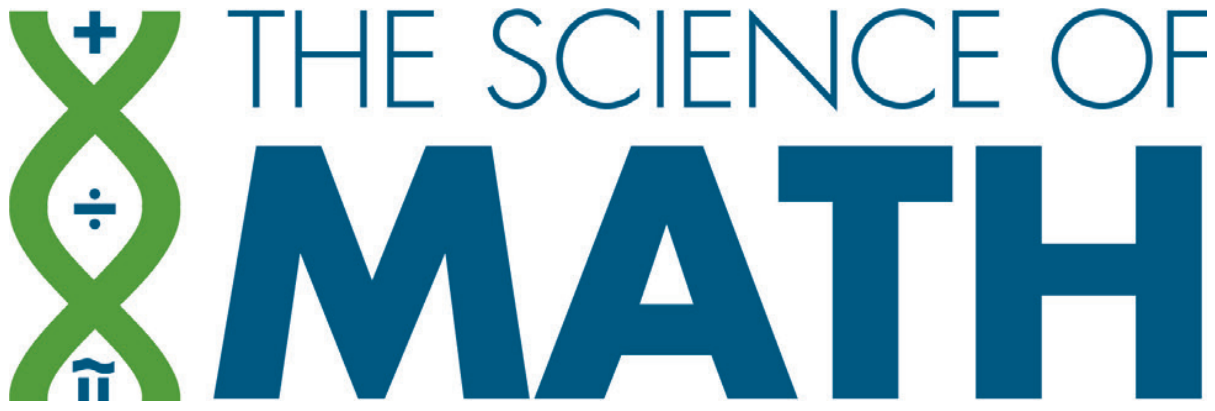
What is the Science of Math?
The Science of Math is a movement focused on using objective evidence about how students learn math to make educational decisions and to inform policy and practice. To read an introduction to the science of math. see https://journals.sagepub.com/doi/10.1177/00400599221121721 and https://www.nasponline.org/publications/periodicals/communique/issues/volume-50-issue-6/the-science-of-math-inclusion-opportunity-and-social-responsibility and other sources.1,2,3
What guides the Science of Math?
Advocates for the Science of Math rely on well-researched instructional approaches and research about how students learn.
This research includes descriptive, qualitative, quantitative, and correlational research. Publication in peer-reviewed scientific outlets, strong ratings on sites like the Intervention Tools Chart on the National Center for Intensive Intervention and What Works Clearinghouse, and independent replication of findings all lend greater credibility to research.
It may be important to point out that it is common for very rigorous, high-quality research on math assessment, instruction, and intervention to be published in special education and psychology journals. Often the studies published in those journals include a sampling of the general education population and produce findings that are most relevant to general education math instruction.
Why is the Science of Math needed?
Access to learning math is a basic educational right. Currently, the majority of students in the U.S. do not meet minimum levels of math proficiency,3 which means too many K-12 students are not benefitting from their math education.
State-level data are consistent with more than half of all students in every state in Grade 4 scoring below proficient in 2022 (range across states = 56 to 81% nonproficient).
At the same time, opportunity gaps are apparent by race and socioeconomic, disability, and language status and these gaps have remained stable and unimproved for the last decade according to the most recent data from 2019.
In Grade 8, the percentage of students scoring below proficient differed by race/ethnicity.2
Economic Indicator (Free/Reduced Meals)
At Grade 8, 82% of National School Lunch Program students scored below proficient, compared to 52% of students not in the Lunch Program
Disabilities
At Grade 4, 83% of students with disabilities scored below proficient. At Grade 8, 91% of students with disabilities scored below proficient.
English as a Second Language
At Grade 4, 84% of English learners scored below proficient. In Grade 8, 95% of English learners scored nonproficient. In Grade 12, 97% of English learners scored nonproficient.
Our goal is to ensure that all students, regardless of background or status, have equitable access to high-quality math instruction.⁴
Highly effective core instruction in math delivered to all students is the most powerful way to prevent mathematical failure and even potentially learning disability. Unfortunately, most K-12 math curricula are not designed to enable or include the principles of effective instructional design.5,6,7,8,9 As a result, available math curricula in the U.S. are typically not associated with gains in student math achievement.10
If you would like to evaluate your math curriculum for its inclusion of evidence-based principles of effective instructional design as detailed in the research studies cited on this page, here is a rubric that may be helpful to your decision-making teams. Examining your curriculum closely is valuable so you can identify the supplemental resources and instructional practices that will ensure greater math success you’re your students.
What is the Science of Math
Presenters: Drs. Amanda VanDerHeyden, Sarah Powell, and Corey Peltier
(1) Codding, R. S., Peltier, C., & Campbell, J. (2023). Introducing the Science of Math. TEACHING Exceptional Children, 56(1), 6-11. https://doi.org/10.1177/00400599221121721
(2) VanDerHeyden, A. M., & Peltier, C. J. (2023). Best practices in school applications of the science of math. In P. Harrison, S. Proctor, & J. Grimes (Eds.). Best Practices in School Psychology, 7th Edition, Volume 2 (pp. 253-264). Bethesda, MD: National Association of School Psychologists.
(3) Hollins-Sims, N. Y., Codding, R. S., & VanDerHeyden, A. M. (2022). The Science of Math -- Inclusion, Opportunity, and Social Responsibility. Communique, 50(6), 1, 31-34.
(4) https://www.nationsreportcard.gov/mathematics/?grade=4
(5) Baker, S., Gersten, R., & Lee, D. S. (2002). A synthesis of empirical research on teaching mathematics to low-achieving students. The Elementary School Journal, 103(1), 51-73.
(6) Bryant, B. R., Bryant, D. P., Kethley, C., Kim, S. A., Pool, C., & Seo, Y.-J. (2008). Preventing mathematics difficulties in the primary grades: The critical features of instruction in textbooks as part of the equation. Learning Disability Quarterly, 31(1), 21–35.
(7) Carnine, D., Jitendra, A. K., & Silbert, J. (1997). A Descriptive Analysis of Mathematics Curricular Materials from a Pedagogical Perspective: A Case Study of Fractions. Remedial and Special Education, 18(2), 66-81. https://doi.org/10.1177/074193259701800201
(8) Doabler, C. T., Fien, H., Nelson-Walker, N. J., & Baker, S. K. (2012). Evaluating three elementary mathematics programs for presence of eight research-based instructional design principles. Learning Disability Quarterly, 35(4), 200-211. https://doi.org/10.1177/0731948712438557
(9) Jitendra, A. K., Griffin, C., Deatline-Buchman, A., Dipipi-Hoy, C., Sczesniak, E., Sokol, N. G., & Xin, Y. P. (2005). Adherence to Mathematics Professional Standards and Instructional Design Criteria for Problem-Solving in Mathematics. Exceptional Children, 71(3), 319-337. https://doi.org/10.1177/001440290507100307
(10) Slavin, R. E., & Lake, C. (2008). Effective programs in elementary mathematics: A best-evidence synthesis. Review of Educational Research, 78, 427–515.






